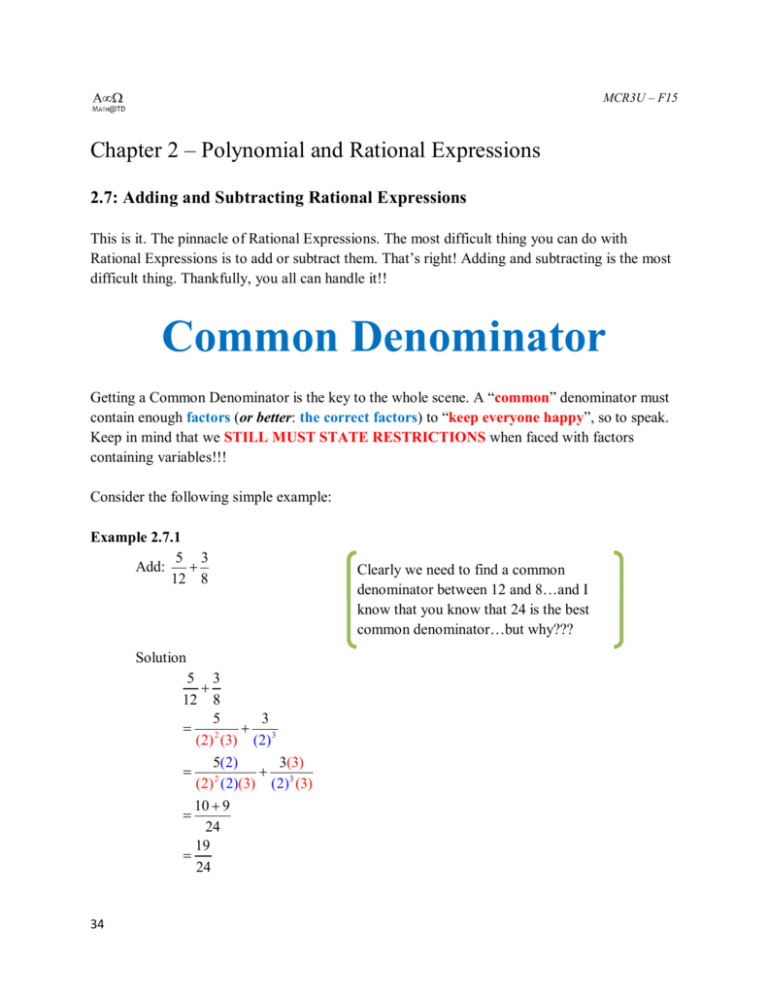Common Denominator
advertisement

MCR3U – F15 Chapter 2 – Polynomial and Rational Expressions 2.7: Adding and Subtracting Rational Expressions This is it. The pinnacle of Rational Expressions. The most difficult thing you can do with Rational Expressions is to add or subtract them. That’s right! Adding and subtracting is the most difficult thing. Thankfully, you all can handle it!! Common Denominator Getting a Common Denominator is the key to the whole scene. A “common” denominator must contain enough factors (or better: the correct factors) to “keep everyone happy”, so to speak. Keep in mind that we STILL MUST STATE RESTRICTIONS when faced with factors containing variables!!! Consider the following simple example: Example 2.7.1 5 3 Add: 12 8 Solution 5 3 12 8 5 3 3 2 (2) (3) (2) 5(2) 3(3) 3 2 (2) (2)(3) (2) (3) 10 9 24 19 24 34 Clearly we need to find a common denominator between 12 and 8…and I know that you know that 24 is the best common denominator…but why??? In order to simply Rational Expressions being added or subtracted, you must: 1) Factoring any polynomials which can be factored 2) Stating any restrictions on the variable(s) 3) Determine the COMMON DENOMINATOR by identifying all needed factors 4) Writing the rational expressions with the needed factors so that each expression has the same denominator. 5) Add/Subtract the numerators of the expressions (which may require some expanding so that you can collect like terms!) 6) Check to see if the simplified numerator can be factored, and if it can, factor it. 7) Write the sum/difference in simplified (factored) form Example 2.7.2 Simplify, stating any restrictions. 3 1 3 2 4 t 2t 5t Example 2.7.3 Simplify and state any restrictions. 4x 3x 2 2 x 6 x 8 x 3x 10 35 Example 2.7.4 Simplify. State restrictions. BEDMAS, folks, BEDMAS!!!!!!!!!!! (Seriously…bedmas) p 1 p 2 p 12 p 2 4 p 12 p 2 2 p 35 p 2 2 p 24 p 2 2 p 15 Class/Homework Section 2.7 Pg 128 – 130 #3bc, 5cd, 6abef, 7acef, 8, 9abd 36











